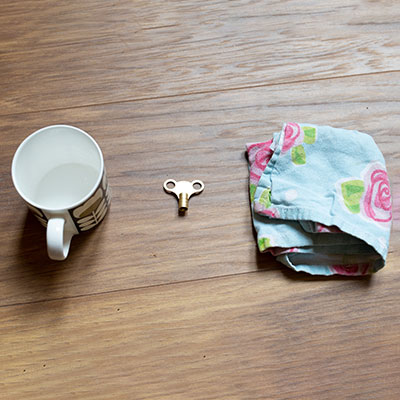Step 1: Turn off your boiler
Turn off your radiator and let it cool down fully before doing anything. It should take 20-30 minutes, so that’d be a perfect time to make a cup of tea or coffee!
Bleeding your radiators will help maintain your central heating system and will keep your home warm and snuggly (and your heating bills low).
The process of heating and cooling water can produce air bubbles in your radiators. As air doesn’t conduct heat as well as water, air trapped inside your radiator can stop it from heating up properly (or at all!). If this is the case, you’ll need to remove the air by bleeding the radiator.
It’s recommended radiators are bled twice a year, but you might have to do it more often if air’s been trapped in your heating system. There are a few tell-tale signs that your radiator needs bleeding.
The most obvious indicator would be your radiator not heating up as it should. In this case, check your central heating is on and that your radiator’s lockshield is fully open (turn it anti-clockwise as far as you can to open it). If after a few minutes the radiator is still not heating up, then you probably need to bleed it.
Useful tip: Sometimes the bottom of the radiator will warm up, but the top will remain cold. This is also a sign that there is air trapped in it.
Other signs your radiator is not working properly are more subtle. While condensation is often a result of insufficient ventilation, unbalanced heat in your house can also be the cause, so keep an eye out for mildew. If you notice any, make sure you check your radiators are working properly.
If your radiators are making gurgling, gulping and rattling noises when you first turn on the heating, it can mean there is air trapped inside the radiator.
Bleeding your radiator is a lot easier than it sounds. Once your radiator’s cooled down, it takes only 20-30 seconds to bleed it. Just follow the below steps...
Turn off your radiator and let it cool down fully before doing anything. It should take 20-30 minutes, so that’d be a perfect time to make a cup of tea or coffee!

While you’re waiting for the radiator to cool down, get your tools ready.
You’ll need a mug, a tea towel and a radiator key.
Useful tip: There are a few different types of radiator keys, so always make sure you check which one you need. If you’re one who prefers to be prepared for all emergencies, it’s worth having a look at what key is needed when you move in and buying one so you have it ready in case you ever need it. They’re not expensive and can be purchased from supermarkets, DYI shops or online.

Place the tea towel on the floor under the radiator- you don’t want the water going everywhere!

The bleed valve will be located on the top left or right side of your radiator. Open the valve by using the radiator key and turning it anti-clockwise. Make sure you have your mug at hand to catch any run-off water.

As soon as water starts coming out from the valve, turn the key clockwise to close it.

Bleeding a radiator can cause the pressure in your boiler to drop, so check it after you’ve bled your radiator. The pressure should be between 1 and 2 for your boiler to work as normal. Non-digital boilers will have a gauge on them to show the boiler pressure. Digital boilers will have an LCD screen that will show an error message if the pressure is too low or too high.
If the pressure’s dropped below 1 after the bleeding, then have a look here at the guide we’ve prepared to show you how to quickly top it up. If the pressure appears to be fine, then all you have to do is to wait for a few minutes while your radiator is warming up!
